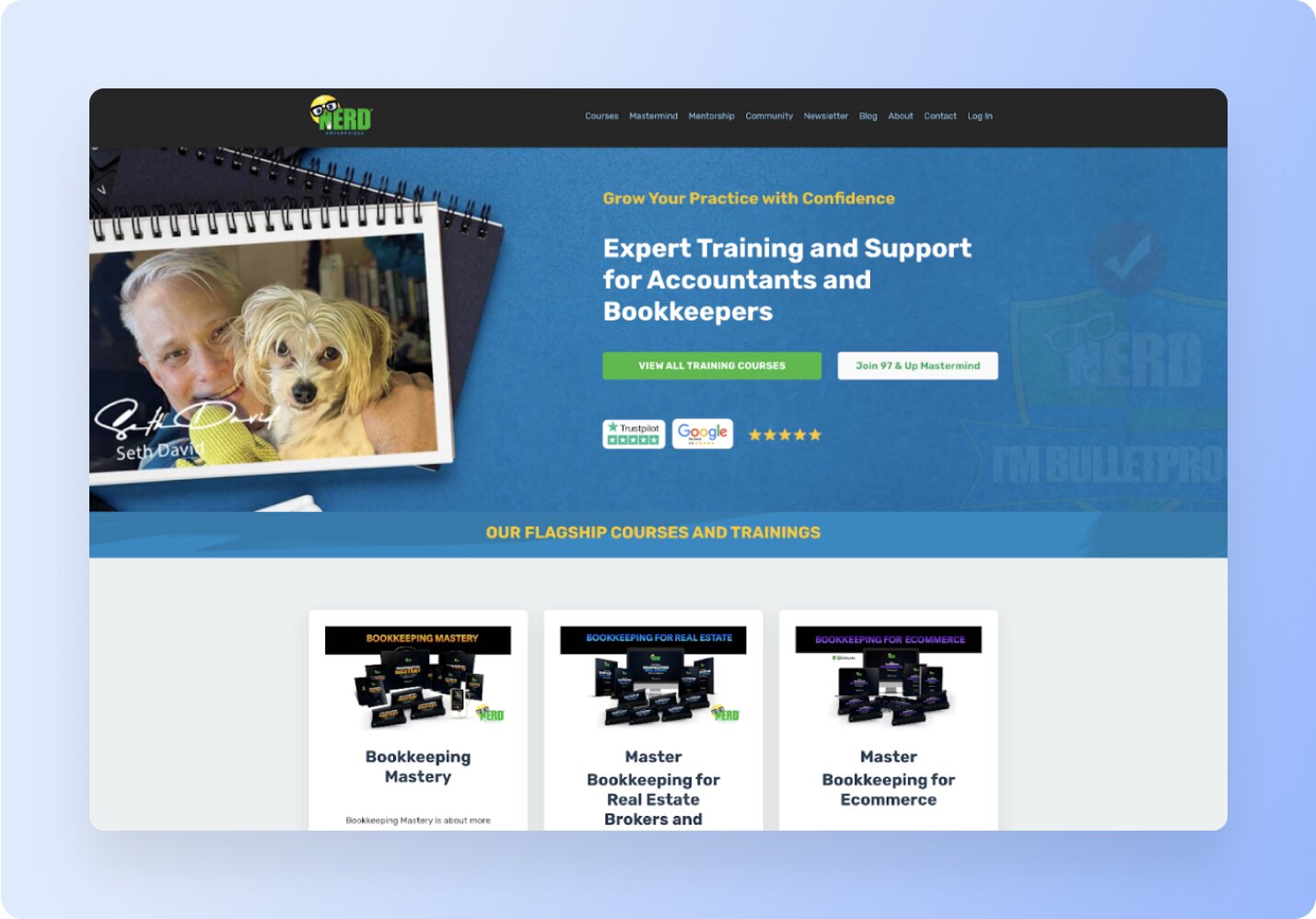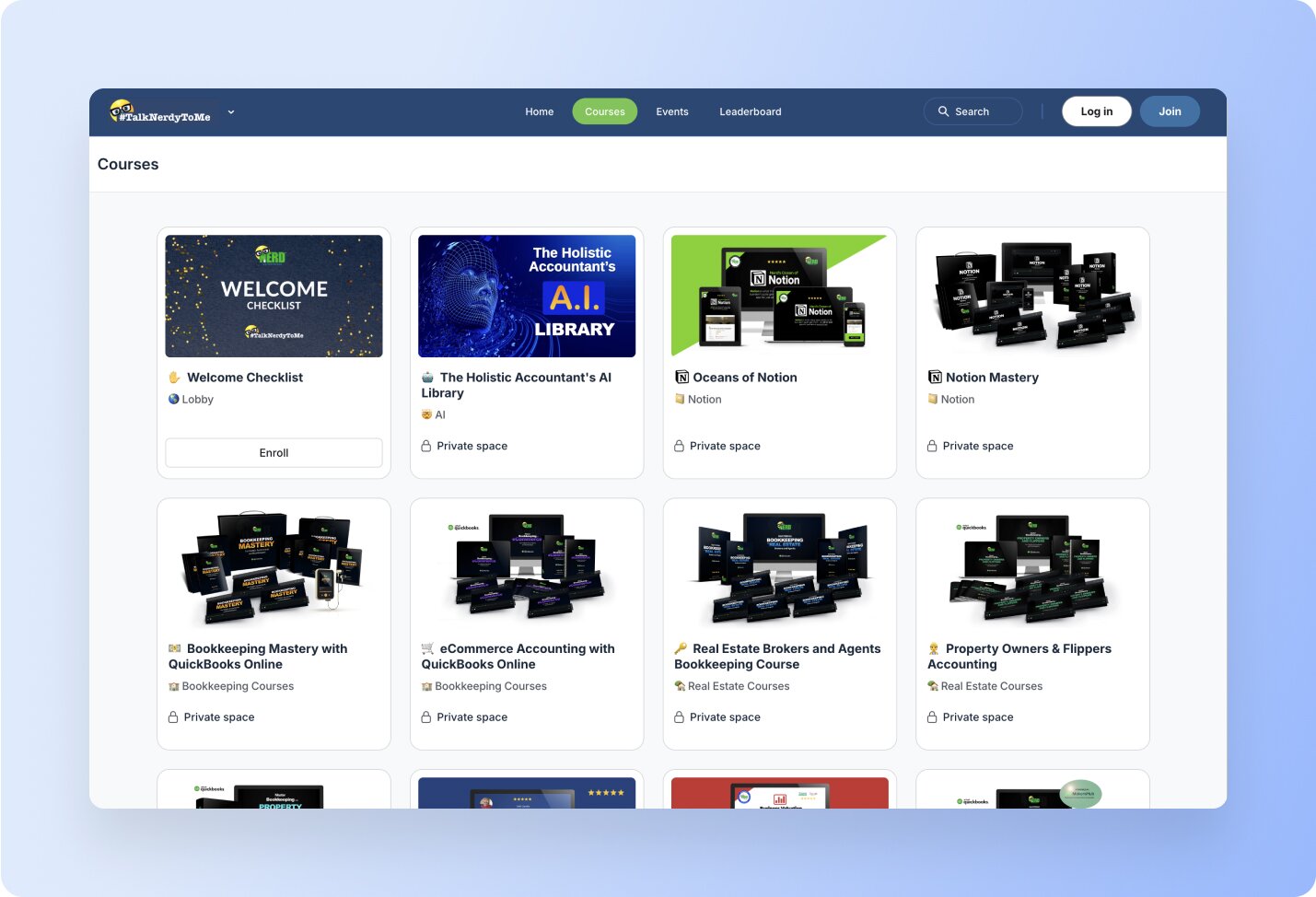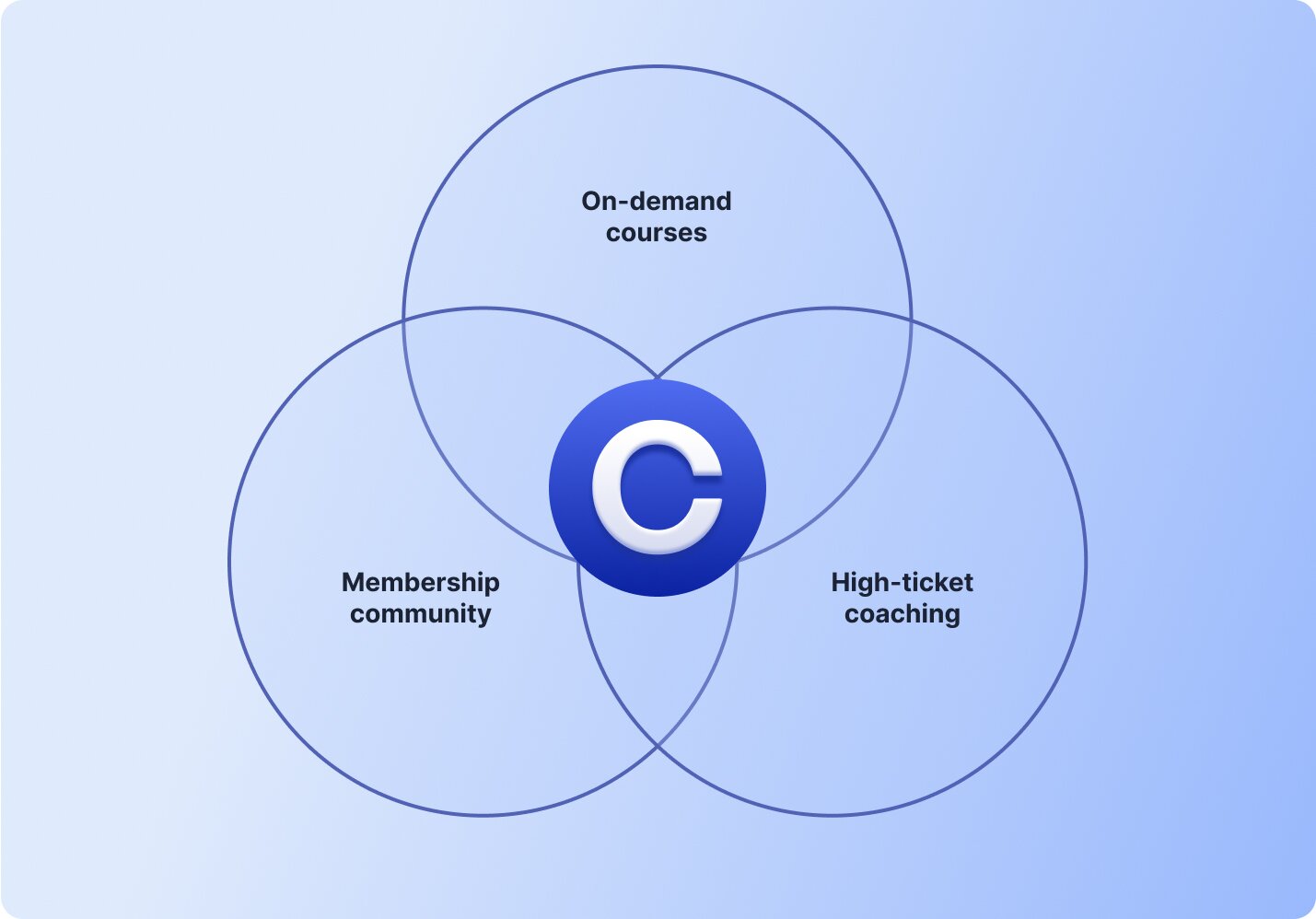
Why Seth David moved 30+ courses off Kajabi — and rebuilt his business on Circle
Overview
Seth David, founder of Nerd Enterprises and Talk Nerdy to Me, was running a thriving education business—but juggling too many tools: Kajabi for courses and email, Slack for community, Zoom for events, and Notion to hold it all together behind the scenes. While Notion remains a core part of how he runs his business, the rest of the stack was slowing him down. After migrating 30+ courses and centralizing his operations on Circle, he's created a more streamlined, scalable experience—for himself and his members.
I used to send people everywhere—Slack, Kajabi, Zoom. Now it's all in one place, and I actually want to spend time there.
Before
An early builder with deep roots in education

Seth David has been teaching accounting and business fundamentals online for decades. As a tech-savvy educator and founder of Nerd Enterprises, he's built a reputation as a trusted guide for accounting professionals looking to level up.
What started as a handful of courses evolved into:
A library of 30+ on-demand courses
A membership community (97 & Up)
A high-ticket coaching program (The Holistic Accountant)
I want people to learn, get inspired, and have fun. That's the DNA of everything I build.
But as the business grew, so did the complexity behind the scenes. Seth was managing content, communications, and live sessions across a growing stack of tools — each disconnected from the next.
Challenge
Disjointed experience, clunky operations
Seth's tech stack looked like this:
Kajabi for courses, payments, and email
Slack for community
Zoom for live sessions
Notion for internal planning and tracking (still part of his core stack today)
WordPress in the early days for course delivery
Notion still plays a central role in Seth's workflow—and he even teaches courses on how to master it for productivity and organization. But the rest of the stack felt functional but fragile, and far from integrated. Before Kajabi, Seth hosted his courses on a WordPress site using membership plugins. It worked, but just barely. Everything had to be stitched together manually, which made updates fragile and the experience clunky. Kajabi felt like an upgrade at first: an all-in-one LMS with a cleaner course interface and built-in email. But its community features never stuck. Even after trying to consolidate his audience there, engagement dropped, and the workflow felt disconnected.
I figured even if Kajabi's community experience was clunky, at least everything would be in one place. But it just didn't take.
Seth had automated onboarding with APIs and invite links. But offboarding? That was a different story. When someone canceled a subscription, he had to manually cross-reference data across platforms. Often, users signed up with different emails on Slack and Kajabi, leading to a scavenger hunt just to turn off access.
Offboarding someone from Slack was a nightmare. I'd search five different ways just to deactivate one person.
The final straw came when Slack charged $3,000 for a mostly inactive workspace—while another neared $1,000/month. Altogether, he was paying $12K/year, with renewals pushing $15K.
It felt like writing [Slack] a blank check. One spike in activity, and the bill could skyrocket overnight.
That was the breaking point. Seth paused everything and began a full evaluation of the market. He tested eight alternative platforms, and invited trusted members from his community to help vet them. He wasn't just looking for better UI. He was looking for a smarter, simpler way to run his business.
Solution
One platform to run his entire business

After careful testing, Seth chose Circle—not just because it was cheaper or flashier, but because it actually brought everything together. He replaced Kajabi, Slack, and WordPress outright, and dropped Zoom Webinars—keeping only a basic plan for occasional use. Circle became the new home for his courses, community, live events, email, and direct member interactions. Seth now pays just over $4,500/year to run all of that in Circle—a fraction of what he used to spend on Slack alone.
The migration was seamless. I thought there would be problems, but everything came over clean. And the team was so professional and responsive throughout.
Here's how he made it happen:
30+ courses migrated from Kajabi
Even midway through the migration, Seth added more courses to the scope, and the Circle team handled it with ease.Live sessions hosted in Circle
After a successful test, Seth now hosts his weekly live calls directly in Circle. No separate Zoom links, logins, or tool switching.Weekly newsletter published with Email Hub
His long-running email, Nerdswords, now lives in a one-way Circle space. With just a click, each post becomes a broadcast email and a permanent community resource.Creative lock screens
Seth swapped lock icons on private spaces for emojis—sparking curiosity and encouraging click-throughs. Inside each gated area is a beautifully designed lock screen that explains exactly what the space is, and how to unlock it.AI Agent "Sandy" answers member questions
Seth trained an AI agent on his course and community content. Members now get instant answers without needing to DM him or wait for support.
My AI agent is amazing. It's already saving me time. These are questions that used to land in my inbox.
He also used the migration as a chance to streamline his audience. Instead of bulk-importing thousands of contacts from Kajabi, he created personalized course-level invite links—bringing over only those who were still active and engaged.
Now I'm only bringing in people who care, and I can focus entirely on delivering value.
What used to live in separate tools is now a streamlined system. Courses, community, and coaching—finally connected in one place.

Transformation
Less juggling. More connection. Real results.
Since switching to Circle, Seth has rebuilt Nerd Enterprises into a business that's easier to run, easier to scale, and easier to love being inside. Instead of chasing down cancelations or troubleshooting broken workflows, he's connecting directly with members—DMing them, surfacing content in context, and guiding them to the right program with a click.
Now I have time to directly engage my members. I'll randomly DM people just to say hi. Sometimes they're surprised to hear from me, but I learn a lot from those conversations.
And the results speak for themselves:
300+ members actively posting, commenting, and joining live events
80% free trial conversion rate into paid programs
$37K+ in monthly revenue from coaching, courses, and community
Now the community is the funnel. Everything leads to Circle—and once they’re here, they see the full value of what I offer.